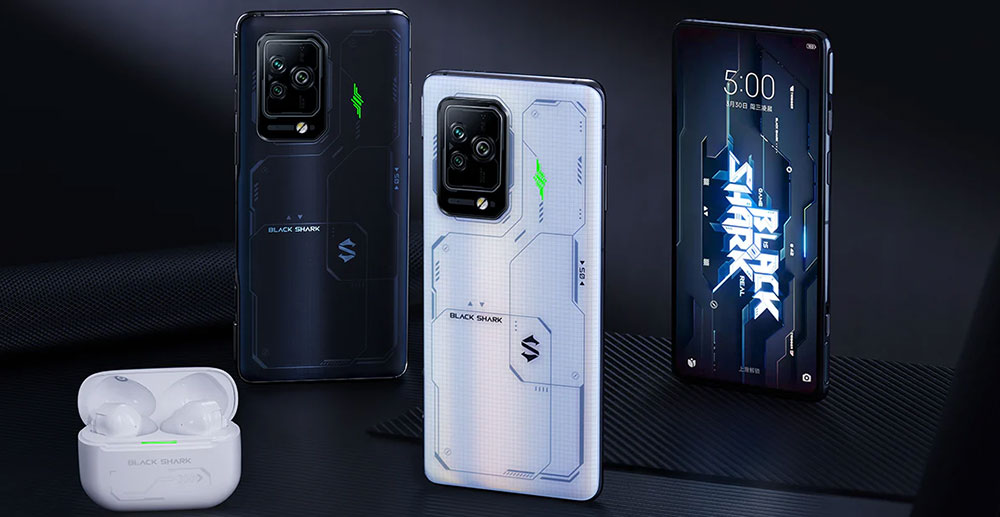The video game market is divided into five segments: legacy PC and console, evolving mobile devices — mostly phones but some tablets, and the emerging cloud. That’s four, I’ll get to the fifth segment in a minute.
Observing these segments, Qualcomm is present mostly in evolving mobile devices. At the same time, that has an interesting connection to the emerging cloud segment, given you can’t play a game in the cloud unless you have a client device — at least not right now. The preferred client device is a smartphone because it is almost always with you.
Now for the fifth segment: VR gaming, which is surrounded mostly by Meta’s Oculus Quest 2, which also uses Qualcomm tech.
Let’s talk about Qualcomm, gaming evolution, and the bottlenecks that currently prevent the expansion from consoles and PCs to more mobile devices and the cloud — and video game trends.
Then, we’ll close with my product of the week, which is arguably the best gaming smartphone on the market.
Console Gaming
This is the oldest form of broad market video game. I say “broad market” because there were video games you could play on mainframes, but only a few folks knew how to play them and had access to the mainframes to do so. Console gaming has several sustaining advantages but also some critical disadvantages.
On the advantage side, the hardware is dedicated, and all patching and updates are handled by the console maker for as long as that version of the console is supported. You generally don’t have to worry about malware if you use approved games (which are often downloaded today), and you can be almost certain that any current title will play well on a current console. Hardware cost is affordable — generally under $500 to get started — and you can use a decent TV screen, so you don’t need an expensive monitor.
The downside is that the game console only plays games. Chances are it isn’t with you unless you are at home because taking it on vacation is a bit of a pain, and good luck playing a game on a console in a car or plane while in transit. This is offset by consoles like the Nintendo Switch that do allow for mobile gaming but tend to be targeted at a young audience.
So, consoles are great for gaming but not flexible or portable enough for how most seem to want to game today. But it is good at gaming on a TV at home if you have the room and no one else wants to use the TV while you are gaming.
PC Gaming
The PC gaming market really took off after Windows 95, as that operating system came with games bundled in. This segment has a different set of advantages and disadvantages.
Advantages include being able to game and do work at the same time, and PCs come in both desktop and laptop form, allowing for both more hardware variety and more mobility than most consoles. Games that use keyboards and mice tend to work better with PCs, but you can also often use gaming controllers as well if needed. You can build a custom desktop PC that is, in and of itself, a status symbol to other gamers and buy your way to a stronger competitive edge.
The disadvantage of PCs is that gaming rigs tend to be expensive. You can easily drop over $5,000 into a top desktop gaming rig. Gaming on a laptop can result in having to use a smaller display and dealing with reduced battery life. Gaming laptops also can cost as much as gaming desktops when fully equipped. While we do carry our PCs more often than we do most consoles, we still may not have them with us when we want to game. They tend to be large, making them harder to use on a plane or in a car.
I find laptop gaming too restrictive on display size to want to use them often. I mostly game on a custom gaming desktop rig with a large Dell 49-inch display.
Mobile Gaming
This is where Qualcomm is showcased, and it is the fastest-growing segment. It, too, has advantages and disadvantages.
Advantages have to do with availability and flexibility. Like PC gaming, you can use a smartphone for more things than gaming, and you can multitask. The smartphone is always connected, leading to what may be a better-connected experience. People carry their smartphones with them so they can game wherever they are and often where a PC or console isn’t viable, like when standing in a line. Titles have been steadily improving over time, and the richness of mobile games can approach what you’d see on a console or even some PC games.
Disadvantages are that smartphones generally are designed for connectivity, not gaming, and a non-gaming smartphone, even if it has Qualcomm’s latest and most powerful Snapdragon processor, will likely begin to throttle down very quickly when used for gaming because the phone can’t dump enough of the heat it generates. Performance is generally traded off against mobility. Screen sizes are very small (but can be offset with head-mounted displays), and the small screen is also a control surface (but with a head-mounted display can become a dedicated controller).
Overall, smartphones are closing in on the utility and capabilities of PC and console games but are still limited by the lack of head-mounted displays, which force folks to generally play on the far less capable displays on the phone. Qualcomm is pushing this effort hard, funding gaming tournaments with decent prizes and pushing their leading Snapdragon 8 and 8+ platforms hard to address gamer needs.
Cloud Gaming
This is highlighted by services like Nvidia’s GeForce Now, which provides cloud instances of high-performance gaming PCs for remote gamers.
The advantages are that you get decent PC-level performance with any device that can be used as a client. These services tend to favor games designed for PCs, but they can be played through set-top boxes like Nvidia’s own Shield or on a smartphone, depending on the controller interface. These services provide the most flexibility in terms of hardware and the lowest cost of entry for top-level games.
The disadvantages are they are very dependent on the network, which means you probably can’t use the service on a plane or cruise ship where the network bandwidth is low and the latency is very high. You must pay a monthly fee; you don’t own the service, and the service may not have the game you want to play.
However, it is likely that cloud gaming represents the eventual future of gaming. We just don’t have the network infrastructure yet to make it dominant.
VR Gaming
While there is VR gaming on a PC, the limitations of needing a PC and having to cable-connect to it have limited the popularity of that approach. Right now, the most popular VR gaming platform is Meta’s Oculus Quest 2.
The advantages are that it’s portable and doesn’t require a tether. The games, particularly those tied to movement, are fun and very playable. You can play this while in a car or plane, and you can watch movies on it privately, much like you would with a head-mounted display on your PC or smartphone. Like a game console, you have dedicated controllers, and the cost is under $400 to get started.
The disadvantage is that the expectations for VR gaming are ahead of the hardware. Resolutions are lower than people expect, and the game content is limited. Often, people are made fun of for using the technology, which creates resistance to adoption. There isn’t much in the way of cloud games now, and Meta appears to be burning an unsustainable $1 billion a month building out the experience. and if Meta fails, there is no one in the wings to pick up the slack.
There is also AR gaming, as highlighted by games like Pokémon Go, but this is still too limited, and the promise of this type of game, as highlighted by the old HP video Roku’s Reward, has never been achieved in production.
Wrapping Up
Console and PC gaming continue, but the real growth appears to be in mobile gaming, given how quickly it is growing and how relatively convenient it is. However, it is hampered by the size of the mobile screen and the fact you need a gaming phone to truly experience strong mobile gaming. With a head-mounted display, mobile gaming has far more potential, but these displays are not yet in wide use, which reduces their impact.
VR gaming has massive unmet potential, and I expect the long-term future of gaming will be in virtual space, but we may not get there for a decade or so because we still need better human-machine interfaces to reach the consumer expectations of something like a Holodeck.
As a result, gaming is in flux. Console and PC gaming are still viable markets, but mobile gaming is growing faster and has the potential to overtake both by the end of the decade. For now, Qualcomm is well positioned on both mobile and VR gaming, which puts it in a decent position to help define the future of gaming.
We’ll soon see how all of this plays out.

Xiaomi’s Black Shark 5 Pro Gaming Smartphone
The best gaming smartphone in the market right now is arguably the Black Shark 5 Pro.
It uses the latest Snapdragon 8 processor, has a huge 4550mAh battery with over 1,200 charge cycles, provides a 144Hz refresh rate, has liquid cooling, and a 108MP triple camera system. Its starting price of $799 makes it a decent value, though personally, I’d pay $100 more and get the better-equipped 12GB+256GB model.

Black Shark 5 series gaming smartphones / Image Credit: Black Shark
Another differentiator is that it has physical game triggers, which make it far quicker than screen-based triggers, which is critical for competitive first-person shooter (FPS) games. I’ve had a Xiaomi phone previously and have been impressed with the firm’s quality.
This phone comes in two colors, white and black. I prefer the black version. But what makes this device stand out are the extreme cooling to keep the processor from throttling, the mechanical triggers, the top Qualcomm processor, and the huge battery.
Other features include a 6.7-inch OLED display, HDR 10+, 5 million to 1 contrast ratio, and a dual-zone pressure-sensitive display. The Black Shark 5 Pro is a beast of a gaming phone — and my product of the week.

























































